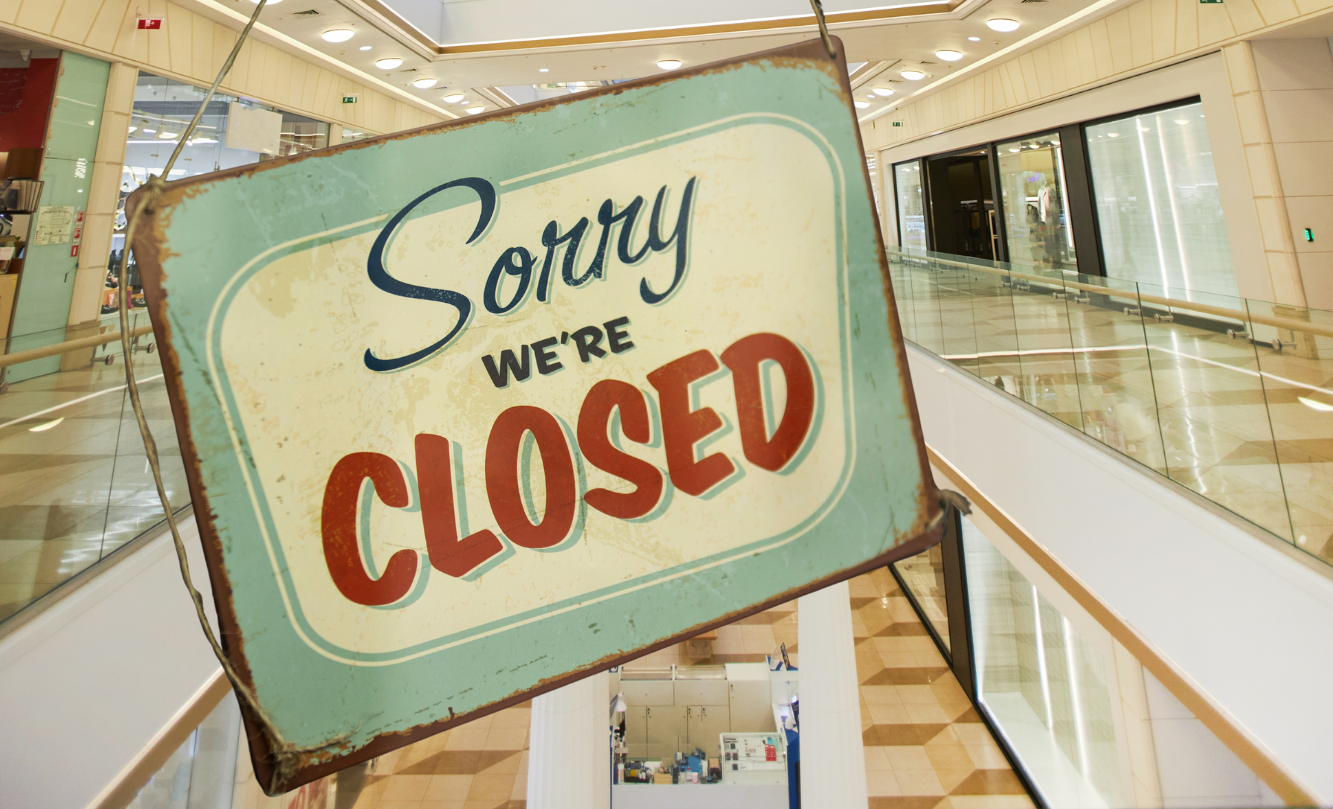

As we covered in our previous post on store closures, the retail landscape is shifting rapidly, with 2025 seeing closures outpacing openings, a trend that started back in 2024. Major retailers like Walgreens, Sears, and JCPenney are cutting locations nationwide as more consumers move online and rising costs make it harder for brick-and-mortar stores to compete.
Shopping malls face unique challenges in the current retail market. Once the centerpiece of shopping culture, malls are now struggling with declining foot traffic, shrinking tenant lists, and rising real estate costs. Many are being forced to downsize, repurpose, or even shut down altogether, raising questions about their future in today’s changing retail environment.
So, are malls destined to disappear, or will they adapt to new consumer habits? By looking at the latest statistics and developments, we can better understand what the future may hold.
Malls have long been staples of the American shopping experience, but they are now among the hardest hit by the wave of retail closures. As anchor stores like Macy’s, JCPenney, and Kohl’s close locations, the ripple effect leaves entire malls struggling to survive. Rising rent prices and declining foot traffic compound the problem, making it difficult for mall operators to fill vacancies and maintain profitability. According to Capital One Research, there are about 1,200 malls remaining in the U.S. as of April 2025, but only around 900 are projected to still be in operation by 2028. Even more alarming, the same research projects that nearly 87% of large shopping malls may shut down within the next decade.

These statistics reflect a broader shrinkage of the retail landscape that shows no signs of slowing. CoreSight Research reports that store closures in 2025 are up 67% compared to last year, with nearly 6,000 closures logged by July alone. Unsurprisingly, the advent of closures outpacing openings has made things difficult for mall owners, as this historic mismatch in the retail landscape leaves them with more empty storefronts than viable tenants. This shift is already visible in leasing trends: Forbes notes that, according to the real estate firm Cushman and Wakefield, the first quarter of 2025 marked the weakest period for retail leasing since the pandemic. Nearly six million more square feet were vacated in the first 6 months of 2025 than were occupied. The article adds that vacancy rates in indoor malls now stand at roughly 9%, compared to only 5% in 2024.

Together, these pressures are reshaping the mall landscape, forcing many properties toward demolition, redevelopment, or permanent closure.
While the headlines around store and mall closures paint a grim picture, not all signs point downward. Foot traffic data from Placer.ai shows that malls still draw strong crowds during peak shopping seasons, with Black Friday visits in 2024 surpassing pre-pandemic levels. As the holiday season approaches, many retailers are expected to see a lift in sales, offering at least a temporary relief from ongoing challenges.
Also, the previously mentioned Forbes analysis reminds us that disruption creates opportunity. With leasing activity slowing in early 2025, retailers have more leverage to negotiate favorable terms, shorter leases, and smaller-format spaces. This flexibility is particularly appealing for newer brands and digitally native companies eager to connect with consumers in person.
In addition, L.E.K Consulting found that younger generations still have a strong love for the mall, with 64% of Gen Z saying they prefer in-store shopping, and 32% of Gen Z specifically valuing a unique, experiential in-store shopping experience — notably more than even some older generations.

Combining these insights, there are reasons to believe malls and shopping centers may evolve rather than disappear entirely. But, regardless of which direction the retail landscape turns, one thing is certain: change will continue.